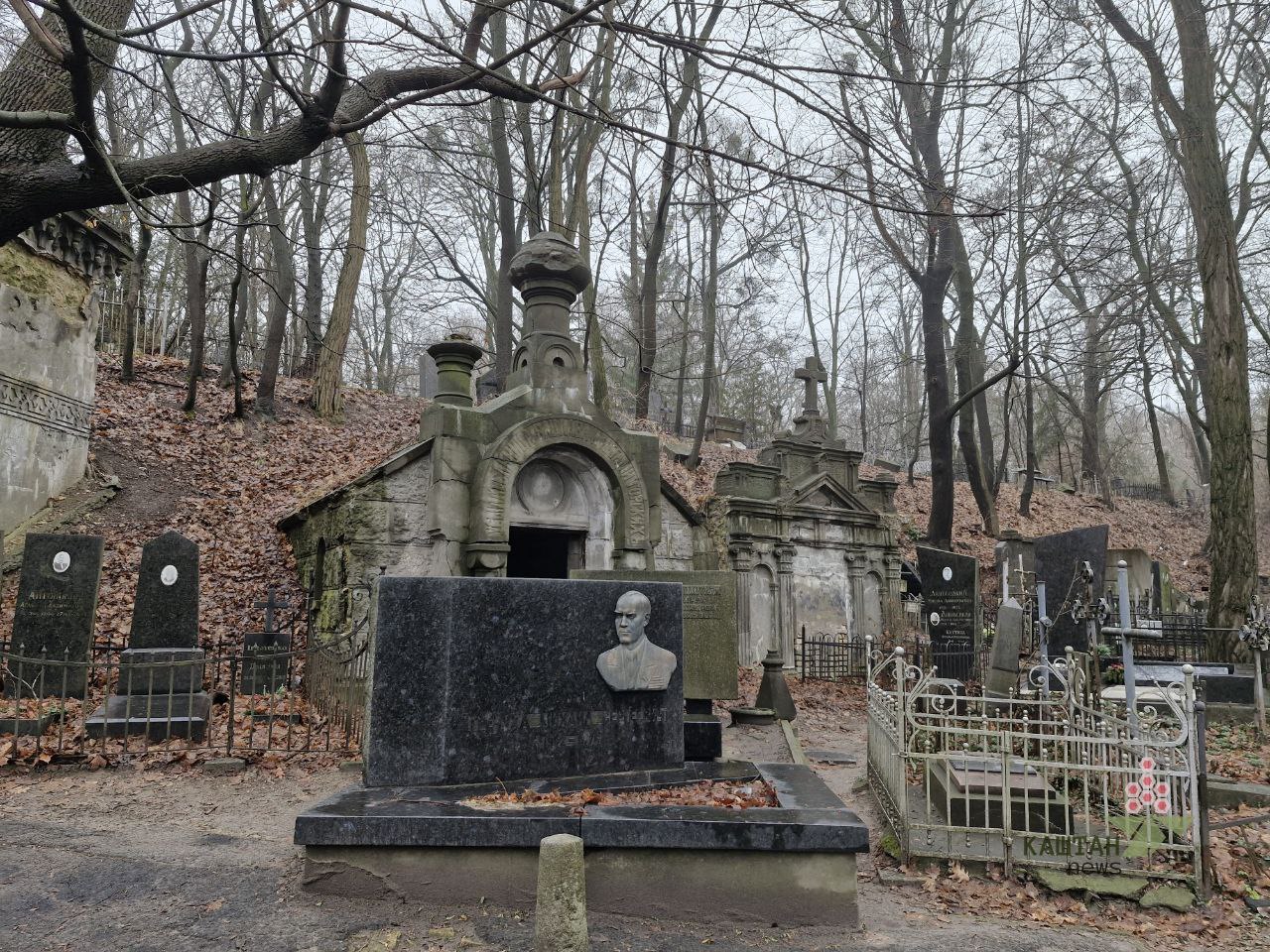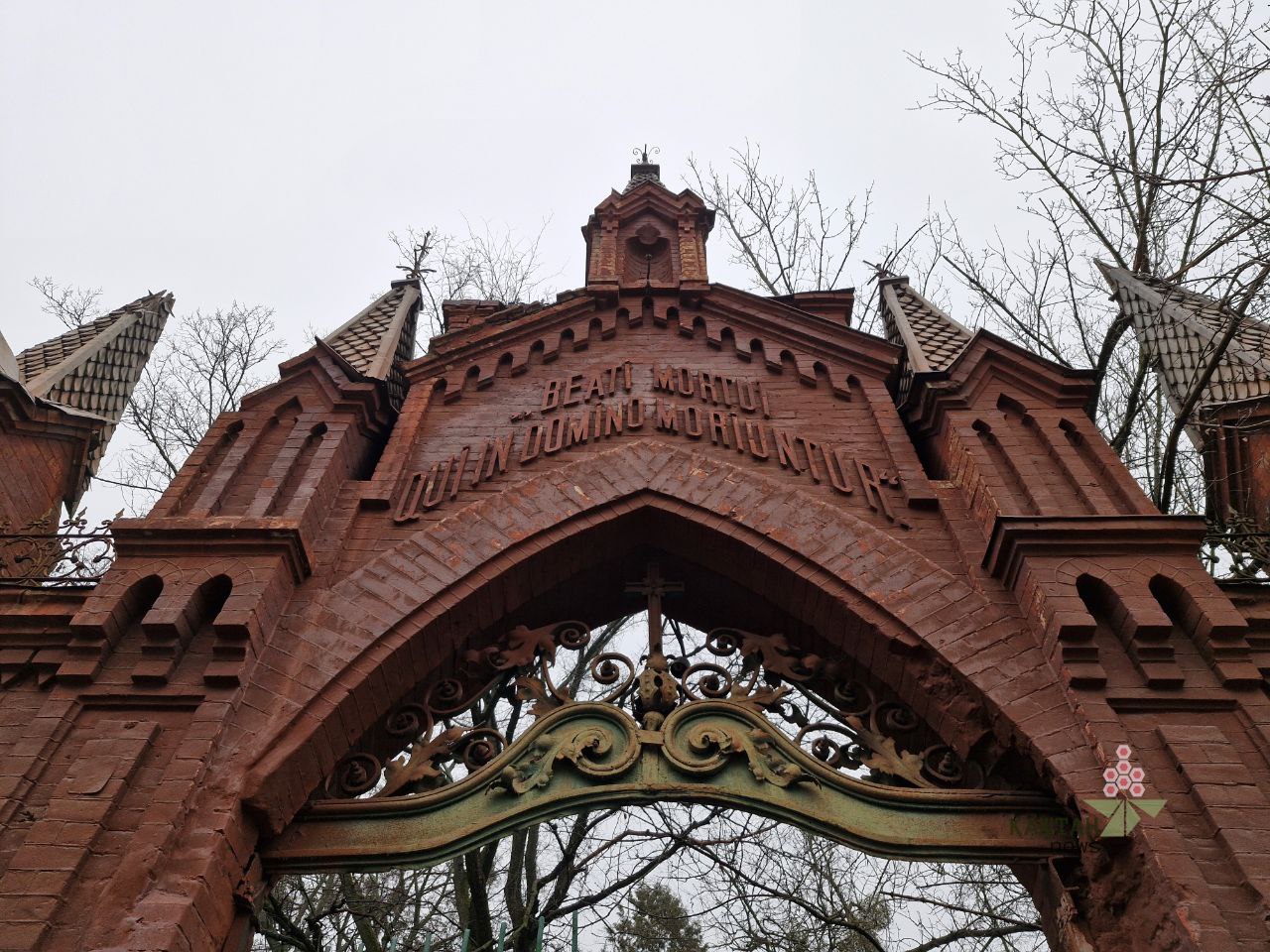There are many places in the capital with fascinating histories that few people are aware of
Kiev is made up of ten administrative units — districts. Each of these is about the size of a small town. The districts have their own histories, traditions, and landmarks.
Kashтан NEWS shares and reminds us of interesting facts about the districts of Kiev. In particular, it has discussed areas named Mysholovka, Zvyrynets, Batiyeva Hill, Lysa Hill, Chorna Hill, Cherepanova Hill, Korchuvate, Feofaniya, Ippodrom, “Expo Center”, Ice Stadium, the museum in Pirohiv, Teremky, Holosiivskyi Park, Central Bus Station, and the confectionery factory.
Today, we will talk about Baikove Cemetery.
Location
The cemetery is located in the Holosiivskyi district on Baikova Hill. Burials began here after the closure of Zvyrynets and Lutheran cemeteries, as well as the old necropolis on Askold's Grave. Baikove Cemetery is considered one of the oldest in Kiev and has been recognized as a historical and cultural monument since 2001. The cemetery covers an area of over 70 hectares and, with a few exceptions, is currently closed for burials. There are over 180,000 graves within the necropolis.
 5
5 History
The first official burials took place here in 1834. However, it is known that earlier, in the 17th century, the Lutheran German community of Kiev had already buried its parishioners in this area, which was called Novostroyenske. The burial sites were located in a lowland, which led to flooding. At times, coffins and even human remains were washed up to the surface. Therefore, over time, the Lutheran community began to relocate the graves to higher ground. In 1831, land was officially allocated for burials on the high right bank of the Lybid River for the Lutheran community and the Catholic community, which completed the process of relocating graves eight years later.
The area got its modern name from Major General Serhii Baikov, who actively participated in the French-Russian and Turkish-Russian wars in the early 19th century. The lands of the current cemetery were then under his ownership.
Two cemeteries with one name
The local authorities were dissatisfied with the state of “burial affairs,” so they ordered the separation of a sufficient area of land, the digging of ditches around it, and the planting of trees, as well as building small guard houses at the entrances. The cemetery began to accommodate people of various religious denominations. For this purpose, the cemetery territory was divided into sections: Lutheran, Jewish, Orthodox, Catholic, etc. This became a remarkable progressive feature for Kiev at that time.
 6
6 By the mid-19th century, Baikove or Dymitriivske, as it was also called then, cemetery was expanded: the authorities ordered additional land to be designated for burials, which was bordered by Baikova Street. Thus, two cemeteries were formed, which began to be referred to as the Old and New.
Later, a brick fence and entrance gates were built around the necropolis, which still bear their names: Old, Lutheran, Catholic. The latter has an inscription that reads “BEATI MORTUI, QUI IN DOMINO MORIUNTUR” (“Blessed are those who die in the Lord”).
 7
7 On the Old cemetery, a wooden Dmitriivska church was built, while on the New cemetery, the Church of the Ascension of the Lord was constructed. A school for 160 boys and 80 girls operated near the latter temple; a library was formed with the help of benefactors.
 8
8 In 1872, an epidemic of cholera swept through Kiev, leading to a rapid expansion of the cemetery. Subsequently, the city authorities allocated specific areas for the burials of teachers from the Imperial University of Saint Vladimir (now Taras Shevchenko National University of Kyiv) and military personnel. Under Soviet rule, party and government officials were buried along the main avenue of the new part of the cemetery.
Family "resting places"
In the late 1980s, the first family vaults began to be constructed in the cemetery. Some of the projects were developed by the best architects of that time in Kiev, including Volodymyr Nikolaiev, Vladyslav Horodetskyi, and later, Oleksii Shchusiev.
 9
9 Today, almost twenty old vaults remain on the territory of Baikove Cemetery. On some of them, inscriptions, including epitaphs, can be read. Some vaults have been bricked up, some have been transformed into utility rooms for cemetery staff, and in others, the deceased rest with open coffins...
All vaults are unique, as they were constructed according to the traditions corresponding to the faith of the deceased. A typical such structure has an area of nearly 9 square meters and a height of 2 meters. They share a common structure: a small memorial room and a fenced underground chamber where the burials took place — coffins with bodies stood in niches.
During World War II, all cemetery books were lost, making it impossible for specialists to establish the family affiliations of some vaults to this day.
 0
0 Many vaults are currently in an extremely neglected state, all are open and have been looted. There is a theory that people hid in the vaults during the war, and later they became shelters for the homeless.
The cemetery and cremation
In 1975, a crematorium was built on the territory of Baikove necropolis, designed by architect Avraam Miletskyi. The first burial in the columbarium — a special place for urns with ashes — took place on December 10, 1977.
Currently, the Baikove crematorium has three farewell halls and six gas furnaces, where more than 12,000 cremations are performed annually (about 35 daily). These furnaces are situated in an earthen mound, accessed by underground corridors.
 1
1 The initial project by architect Miletskyi envisioned a simple, rectangular building for the crematorium. However, in 1968, with the involvement of architects Ada Rybiak and Volodymyr Melnychenko, the project took on a modern appearance.
Melnychenko and Rybiak referred to the crematorium building as “Svitlobeton” and “Temple of Heaven.” Interestingly, in 1974, the project of the Kiev crematorium was recognized by the European Association of Funeral Services.
Scandals surrounding the "city of the dead"
Baikove Cemetery has not been immune to scandals that periodically arise in modern Kiev.
For instance, last year, the cemetery's fence became the center of controversy. The city authorities decided to renovate the century-old fence, reinforcing it against landslides. However, construction of an unknown structure began in place of the demolished part of the old brick fence under the guise of reconstruction. As a result, concerned residents of the capital called on the city authorities to halt the destruction and preserve the unique fence.
 2
2 The Kiev crematorium also found itself in a troubling situation: the State Ecological Inspection of the Capital District claimed it was responsible for environmental pollution amounting to 122.6 million hryvnias.
Who rests at Baikove
Many prominent individuals are buried at Baikove Cemetery.
 3
3 Among those who found their final resting place here are Lesya Ukrainka, Mykhailo Hrushevskyi, Yevhen Paton, Natalia Uzhviy, Oleg Antonov, Oles Honchar, Mykola Lysenko, Ostap Vyshnia, Heorhii Narbut, Maria Zankovetska, Viacheslav Chornovil, Mykola Bazhan, Andrii Malysko, Liubov Zabashka, Ivan Nechuy-Levytskyi, Maksym Rylskyi, Borys Hrinchenko, Vasyl Stus, Leonid Bykov, Mykola Yakovenko, Bohdan Stupka, Valerii Lobanovskyi, Mykhailo Voronin, Hryhorii Chapkis, Leonid Kravchuk, and many others.
 4
4 It is